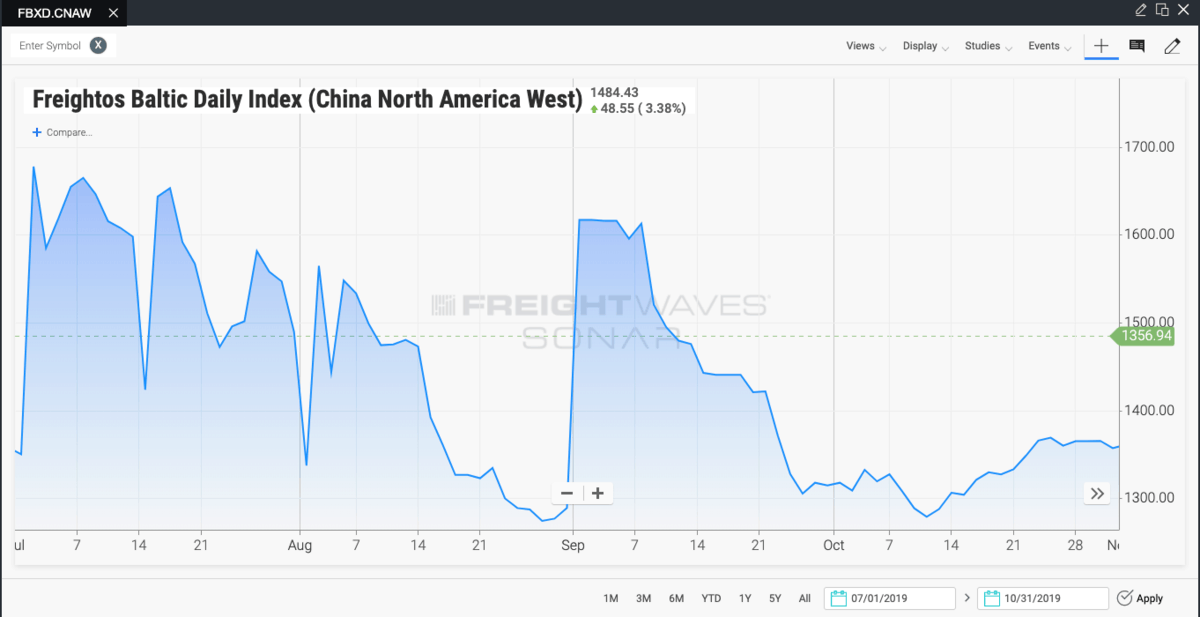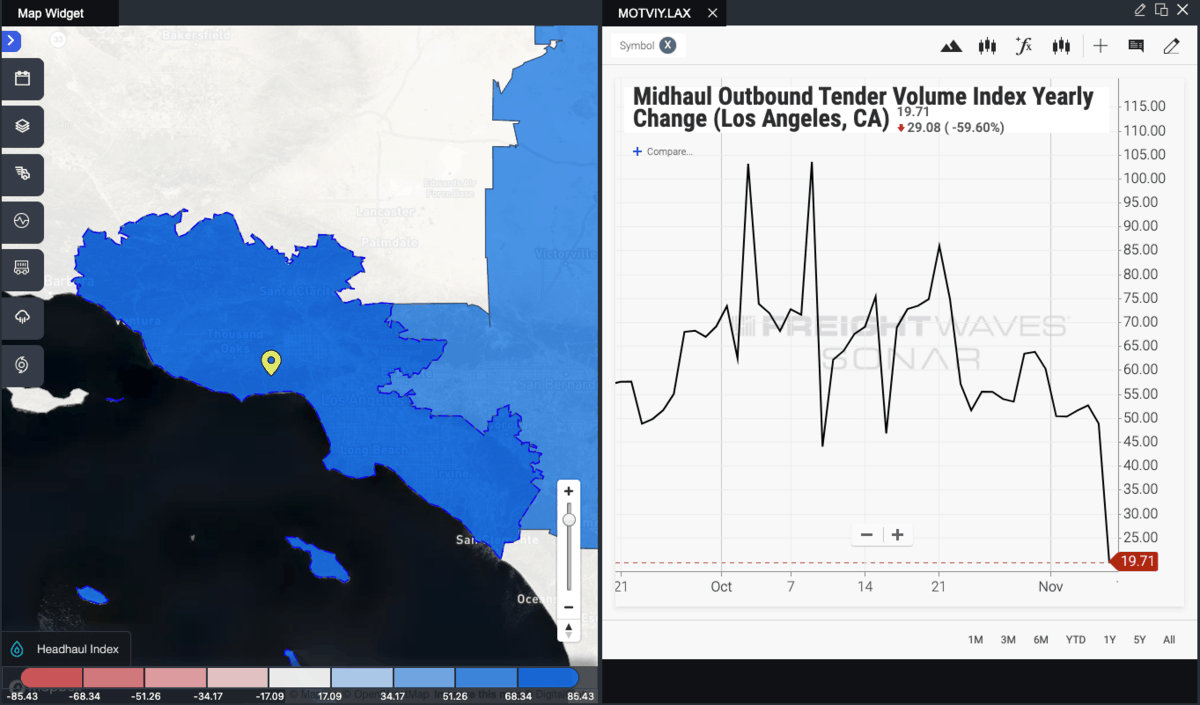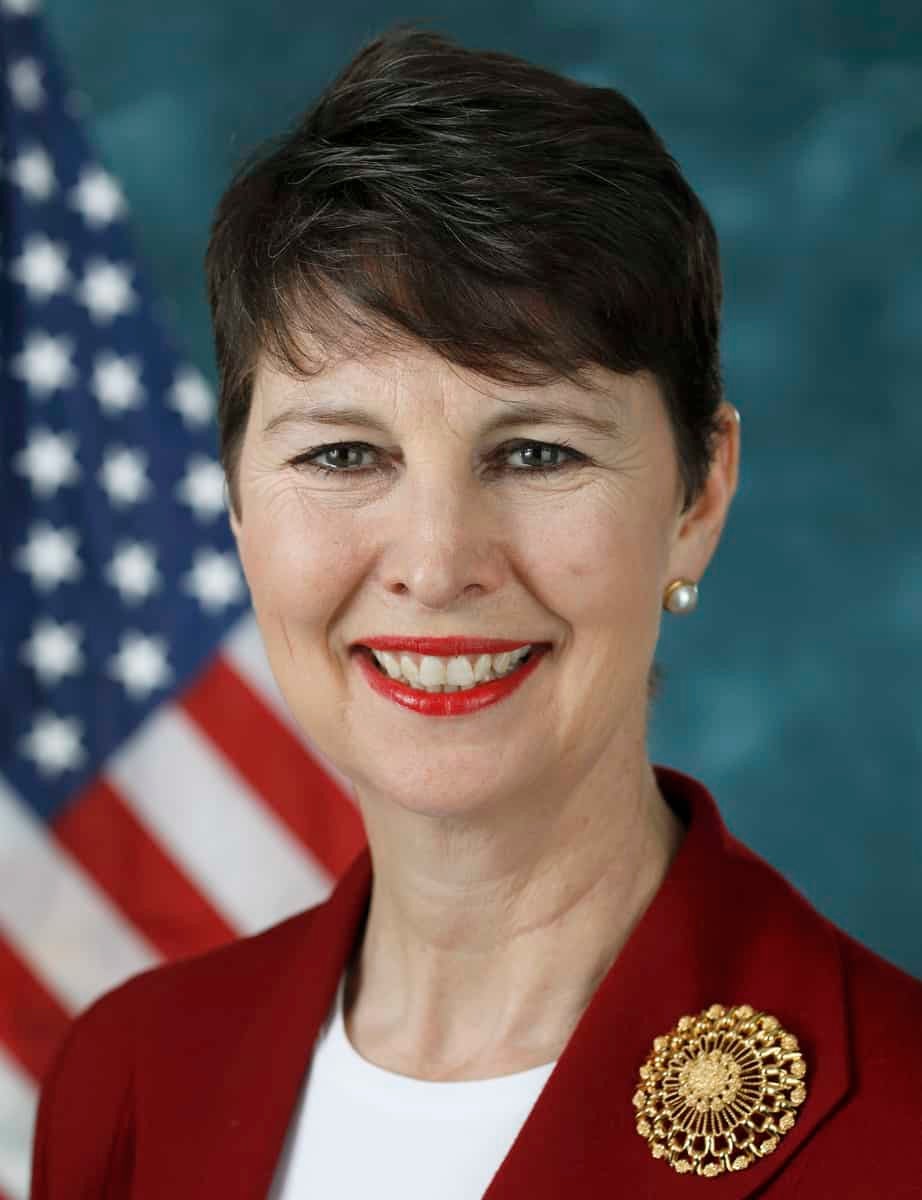The Port of Los Angeles saw the biggest October drop in volumes in over two decades as the U.S.-China trade war wreaks havoc on the container trade and last year’s front loading means tougher comparables going forward.
The largest U.S. maritime gateway moved 770,189 twenty-foot equivalent units (TEUs) in October, a 19% decrease from a year earlier.
That rate is the steepest decline for October in 24 years of available monthly statistics. Since 1995, October container volume handling managed to show an average 6.6% yearly rise.
The decline also stems the high hurdle set last year when Los Angeles saw an abundance of boxes with the biggest October growth in the same period at over 27%. Moreover, October declines are not uncommon as 14 of the last 24 have reported yearly volume drops, ranging from 1.6% to 10%.
The October 2019 decline is more typical of the slack shipping season. The previous low in container handling was March 2018, when container volumes dropped 27%. The decline was uniform across the board, with imports, exports and empties handling all falling in-line.
Year-to-date through October, total box volumes through Los Angeles are up just under 2%, while imports are essentially flat.
The stats mirror the level of trade recorded between the U.S. and China through 2019. As reported by FreightWaves’ Mike King, the U.N. Conference on Trade and Development reported a nearly 22% drop in U.S.-China trade during September. That was an accelerating decline from August as tariffs continue to distort seasonal freight patterns. July and August container volumes were strong as shippers sought to avoid tariffs going into effect in September.
The decline is being felt through the supply chain. October trans-Pacific shipping rates fell to another monthly low in October (SONAR: FBXD.CNAW), before rising into November as volumes are expected to pick up.

There are 33 liner services connecting the U.S. West Coast to China and the Northern Far East, according to Capstan Consulting, and many of them have had to void sailings in order to deal with the downturn.
According to U.K.-based container news PR News Service, the OCEAN Alliance, the leading container service in the trans-Pacific, is dropping four sailings in the fourth quarter, totaling just over 41,000 TEUs in capacity. THE Alliance reduced capacity on one trans-Pacific service by 22% at the start of October.
Likewise, demand for trucking boxes at mid-haul lengths of 250 to 400 miles, about the distance to the Inland Empire warehousing district, has fallen about 60% from a year ago. (SONAR: MOTIY.LAX)

The port’s executive director, Gene Seroka, put the blame on the White House’s policy of taxing Chinese imports, which account for two-thirds of the container volumes coming into the U.S., according to Capstan Consulting.
“With 25% fewer ship calls, 12 consecutive months of declining exports and now decreasing imports, we’re beginning to feel the far-reaching effects of the U.S.-China trade war on American exporters and manufacturers,” Seroka said. “We expect soft volumes in the months ahead, and with the holiday season upon us, less cargo means fewer jobs for American workers. We need a negotiated settlement and the tariffs lifted.”
Speaking at the annual conference of the Coalition of New England Companies for Trade, U.S. Customs and Border Protection (CBP) Executive Assistant Commissioner Brenda Smith said, “One of the things we are all dealing with is a very active trade policy on the part of this administration,” as the initial tariffs went from anti-dumping moves on washing machines and steel to “trying to really sit down with China and figure out what our relationship should be.”
Since March 2018, CBP has assessed and collected $45 billion in additional duties, Smith said.

She recognized the “change in financial practices and the financial burden that that’s put on business to be responsive,” pledging to plead the case for shippers back in Washington.
“It’s not, in fact, China or Mexico that’s paying, it is U.S. business,” Smith said. “Making sure people understand the roll-through effect of the president’s direction and proclamations is an important part of the role Customs and Border Protection can play.”
Still, the outcome of the trade war remains unclear. The U.S. and China are said to be working on a “phased” approach to settle their trade dispute, settling simpler issues first then moving to the more complex issues of technology transfer and market access. The Wall Street Journal reported that China’s Commerce Ministry said the U.S. will remove existing tariffs in tranches. However, the U.S. trade representative has not made an official statement on the removal of Chinese tariffs.
This article has been amended to reflect that China accounts for two-thirds of U.S. container imports.







